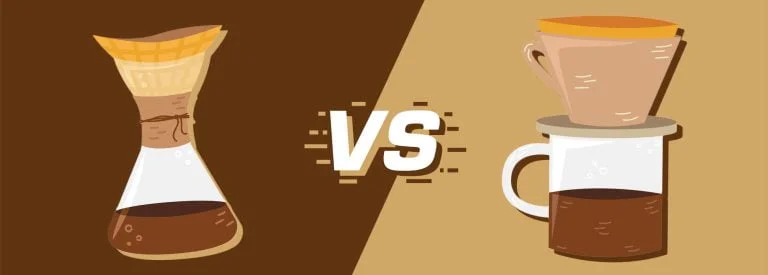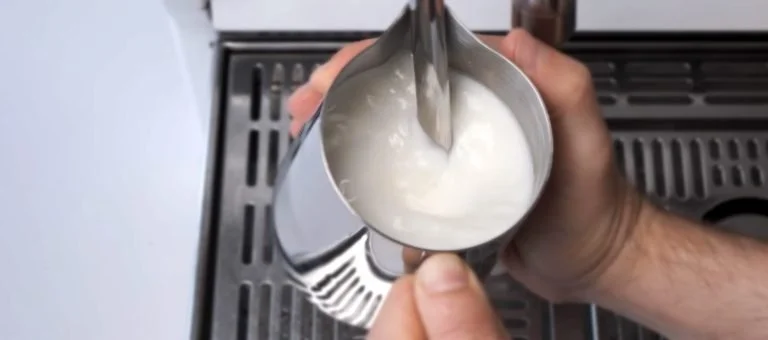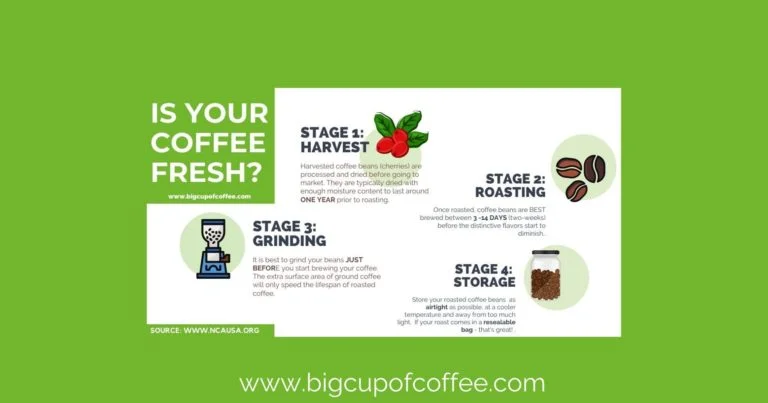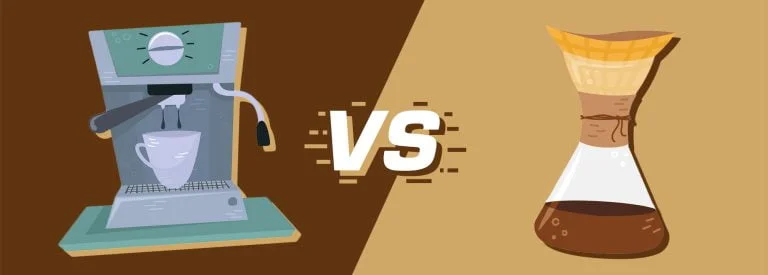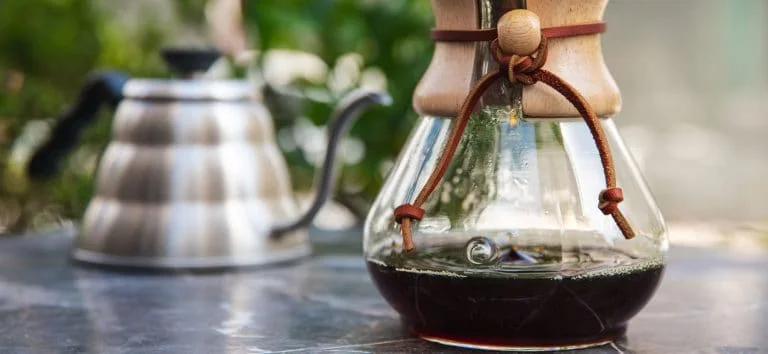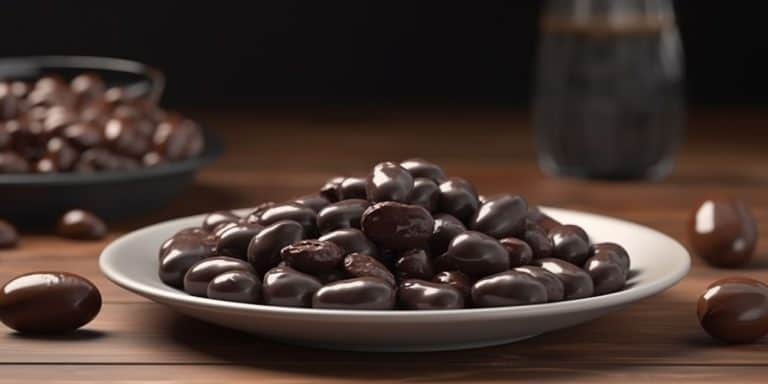Chemex Grind Size Guide: How to Get the Right Fineness Every Time
You don’t need many things to use a Chemex, but you need to get the details perfected.
And one of those crucial details is the grind size.
In this guide on coffee grind size for Chemex coffee makers, we’ll explore:
- how different grinds affect flavor and quality,
- troubleshoot common problems,
- and show you how to master the art of grinding your beans just right.
Make sure you read this article, it will save you lots of experimentation.
What is the Ideal Grind Size for Chemex
The best grind size for Chemex coffee is medium-coarse – not too fine nor too coarse. It is similar to sea salt and should feel gritty when rubbed between your fingers, but be relatively large and easy to pick up. This particle size allows for balanced extraction of flavor by allowing hot water to move freely through the coffee bean grinds.
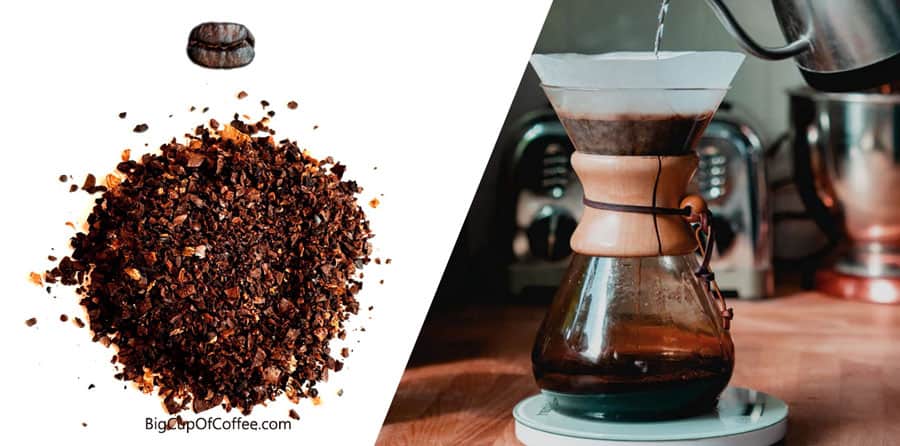
Being in the middle means the larger particles allow water to flow through and extract flavor more evenly while maintaining the cup’s body and complexity.
Otherwise, when the grind is too fine, it clogs the filter, slows down your brew time, and brings out the bitter components that can overpower other flavors in your pour-over coffee.
Meanwhile, when the grind is too coarse, you’ll end up with under-extracted and weak coffee.
It actually took me quite some time to figure out the ideal grind size for my Chemex. While the medium-coarse grind is a good starting point, grind size preferences can be subjective, so don’t be afraid to make adjustments. Sometimes, a slight tweak can make all the difference in achieving the perfect balance of flavors that you are looking for.
Grinder Types: Burr vs. Blade and Their Impact on Chemex Coffee Quality
You can choose between two types of coffee grinders: burr and blade. Each type grinds beans differently, and drastically alters the final taste of your cup.
- Burr grinders crush the coffee beans between two abrasive surfaces, resulting in more uniform particle size and consistent extraction.
- On the other hand, blade grinders chop the beans into irregular pieces that can vary greatly in size, causing uneven extraction and potentially bitter or sour flavors to appear at the same time.
To illustrate this, look at the photos below. Which do you think was made with a burr grinder?
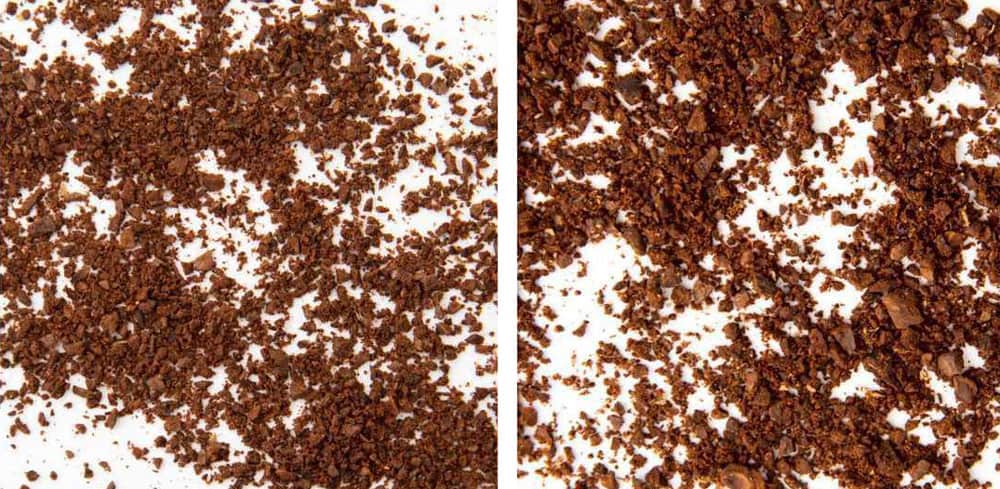
In addition to the type of grinder, the quality of your grinder also matters:
- Cheaper grinders tend to produce inconsistent particle sizes. Poor-quality burrs also heat up quickly and even alter the flavor profile of your beans.
- A high-end grinder, made with better construction materials, larger burrs, and more precise settings, will give you more control over your grind size and help preserve the unique flavors and aromas of each coffee bean variety.
Ultimately, a quality burr grinder helps you to achieve a cup bursting with complex and nuanced flavors that fully represent the origin, roast level, and freshness of your chosen beans.
I recommend investing in a quality burr grinder when brewing with Chemex. It is a bit more expensive at first, but think of it as an investment, the value of which you get to enjoy every single day.
BARISTA TIP: When I first started brewing with Chemex, I struggled with consistency in my coffee flavors. Then I went to get barista training, and things started falling into place. It turns out that even minute changes in the environment, like humidity and room temperature, could affect my grind size and brewing process. So stay adaptable and be prepared to make adjustments to your grind size as needed.
Troubleshooting Grind Size Issues in Chemex Coffee Brewing
You already know the importance of adjusting your grind size, but how do you know when to make those adjustments and in what direction to go?
Here are some tips to help you dial in the correct grind setting:
- If your coffee tastes weak or sour, try using a finer grind size and see if that improves your coffee’s taste.
- If your coffee tastes too bitter, try using a slightly coarser grind size and see if that helps balance the bitterness.
I also want to mention that other factors can affect the taste of your Chemex coffee, including water temperature and pouring technique.
- If your water is too hot, it can extract too much flavor from the coffee, resulting in a bitter taste.
- Pouring too quickly or forcefully can disturb the coffee bed and lead to uneven extraction.
- Blooming your coffee before pouring helps your Chemex extract better and more evenly, allowing your coffee grounds to degas for a well-balanced and flavorful cup.
Always remember that even the most minor changes can drastically impact your cup of coffee. Keep track of whatever changes you make, like water temperature, pour rate, and extraction time – this can help you identify patterns over time and fine-tune your technique.
Frequently Asked Questions
In summary, when brewing a cup of Chemex coffee, the ideal grind size of medium-coarse is a good starting point you can refine if you need to. And remember that the right type of grinder can make or break your experience since burr grinders provide consistent grounds and are my main recommendation for this style of brewing.
If you’re having issues with your grounds, you can easily troubleshoot by experimenting until you find what works best for you.
Try out these tips and please let me know in the comments section how it goes.

